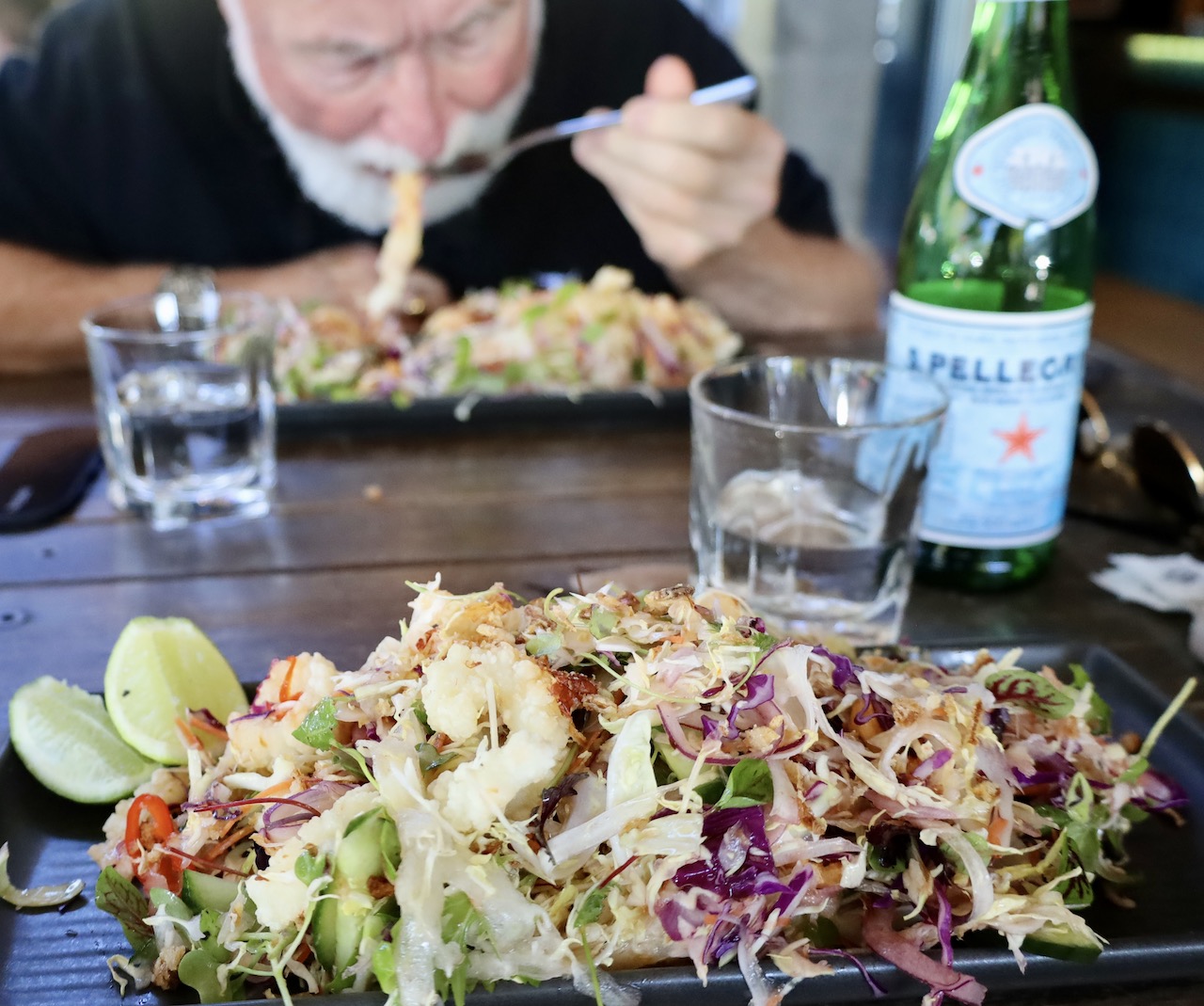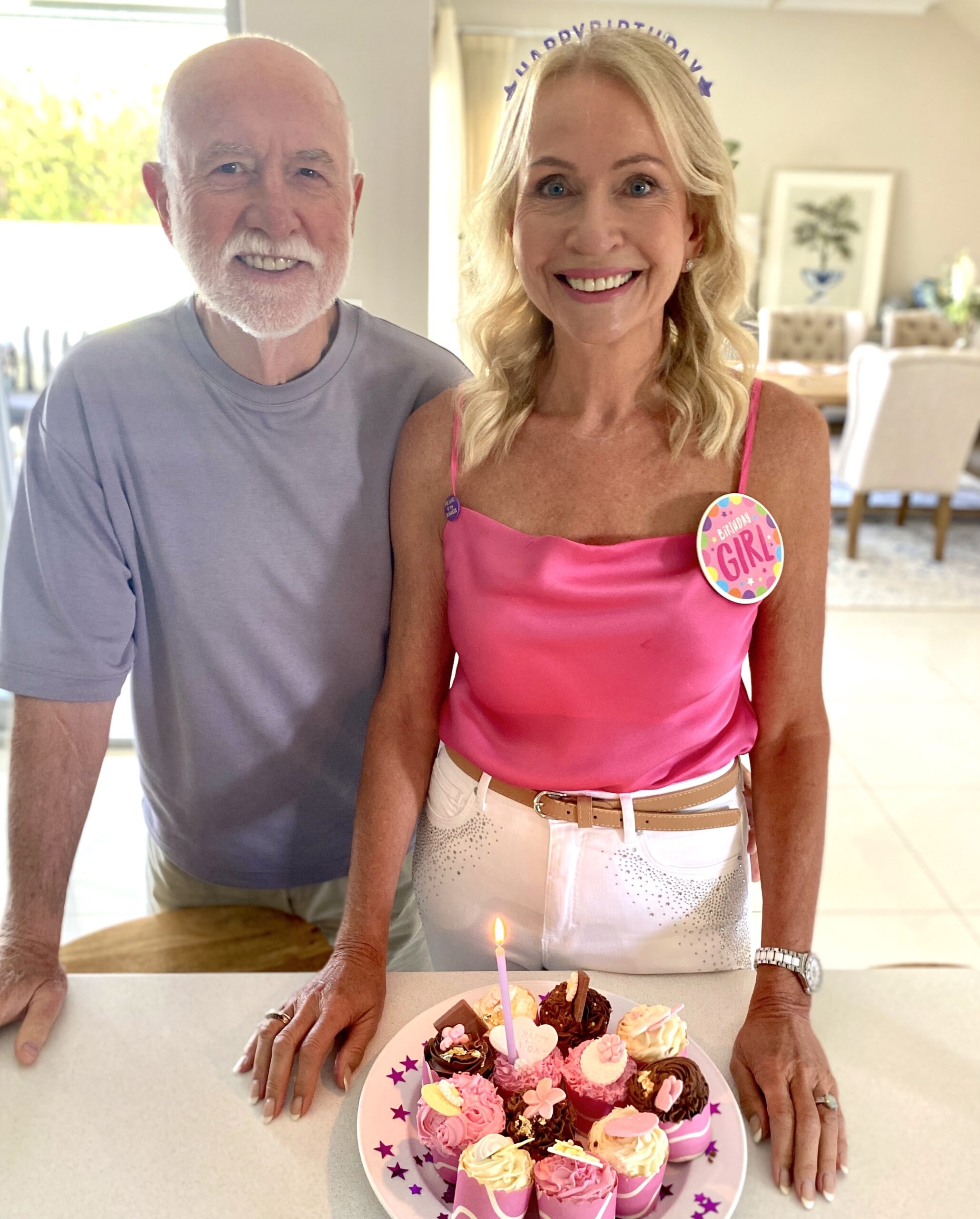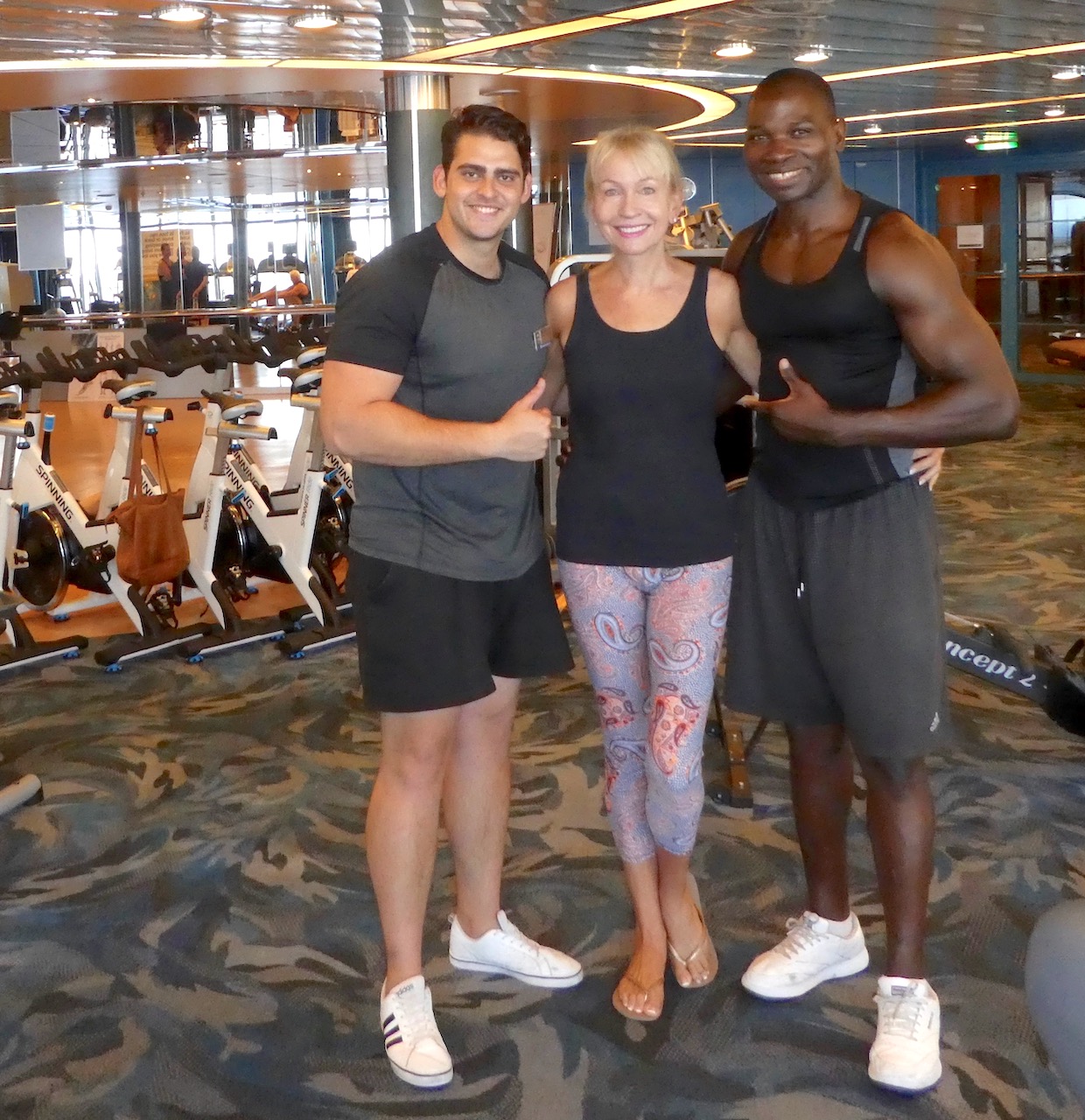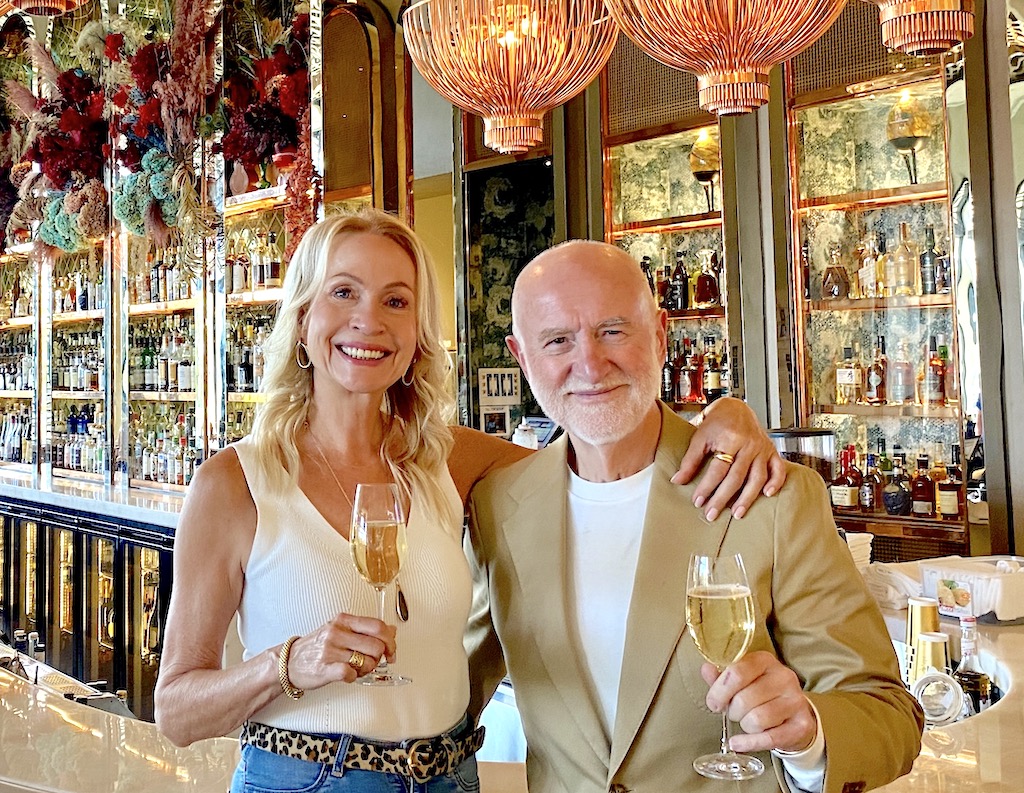This post explains our low-carb lifestyle: the low-carb, no-crap, whole-food plan that helped my husband Roy lose 35kg over 18 months and come off his blood pressure meds. Apart from what to eat, it’s also about intermittent fasting, cooking from scratch and moderate exercise.
Before photos
After a long summer 2019 of gastronomic excess in France, followed by my extended birthday celebrations in South Africa, then niece Charlie’s fancy wedding in London (via France), and a gluttonish stopover in Singapore, when we got to Perth WA at the end of February 2020, Roy was the first to admit he needed to cut back for a while – but neither of us had the slightest inkling of how successful he was going to be.
He’d rather not dwell on his starting weight, and it’s not important anyway. Let’s just say that from the end of February 2020 to the end of March 2021, Roy gradually and steadily lost 30 kilograms – or 66 pounds, for any Imperialists out there. Around mid-August this year, he told me he’d hit the 35kg (75lb) weight-loss mark.
He’s wearing son Carl’s cast-off shorts. He’s buying nifty jackets at Tommy Bahama and T-shirts from Uniqlo. (Including a particularly suave, long-sleeved winter-white turtleneck number.) Even better, when we flew to Queensland (Economy) a couple of months ago, he confined himself to his own seat, instead of involuntarily overflowing. But mainly…
No more blood pressure meds
More importantly than the sartorial benefits and being able to fly Economy in relative comfort, Roy has gradually come off the blood pressure medication he’d been on for years. Not recklessly, note: he used a home blood pressure monitor to check his steady improvement, and weaned himself off over the course of the first year.
(Arse-covering disclaimer: Of course, I can’t recommend this to anyone else. If your doctor prescribed it, he or she should be the one to guide you in coming off it.)
The Plan
It’s been as much focused on Roy getting his health back as on losing weight – and there’s no magic bullet to doing this. Instead, we took a multi-pronged approach that included mainly nutrition, but also movement, sleep and stress management.
Fortunately, Roy has no problem sleeping; and, weirdly, being confined to WA as a result of COVID-19 border closures has drastically reduced the stress associated with the frequent travel we used to do.
Diet – or its fancier name, nutrition – was by far the most important aspect. He agreed to eat only and exactly what I gave him – so, basically, he handed all decision-making over to me. No pressure, then!
It was clear to me that a low-carb and low-crap diet held the most promise. To make it easier all round, I put myself on the same regimen – at least to start with.

Details of the Low-carb, No-crap Diet
For us, this meant:
-
- Cooking everything from scratch. (*More on this below.)
- No grains, at least to start with. That included bread, pasta, noodles, crackers, cakes and cookies – all those addictive comfort foods that make life worth living. (I did find substitutes, which I promise to share in my next blog post.)
- Totally banished – at least for the first six months – were sugar, alcohol, refined white anything, and dairy, except for the milk in Roy’s coffee. That was and remains non-negotiable; I didn’t even try to go there.
- After a few months, whole grains and legumes – but only infrequently, say once or twice a week. I prefer to cook dry beans from scratch, because tinned ones are said to have fewer vitamins and minerals – and the way I see it, when you’re eating such energy-dense food, it had better have all its goodies intact!
- Not too much of anything – stop eating before you’re full. That translates to using the smaller dinner plates and not having seconds.

Egg, avocado and feta salad – a tasty low-carb lunch - Lots of low-carb vegetables, especially broccoli, spinach, rocket (arugula) cauliflower, asparagus, cabbage, green beans, courgettes, snow peas, mushrooms, tomatoes, brinjals (eggplants) and bell peppers, plus garlic and onion every day.
- Limited starchy vegetables like carrots, parsnips, sweet potatoes and butternut squash; but no potatoes, as they’re both high-carb and a trigger-food.
-

Roy shopping for veggies at Bunbury Farmers Market – this was on a holiday to the beautiful Margaret River region, three hours south of Perth WA - Only one or two pieces of fruit a day.
- Moderate amounts of protein, including salmon plus other local fish and other seafood; free-range eggs, chicken and pork; lamb and grass-fed beef. We’re so lucky to have a bountiful supply of all this stuff here in WA – long live our local supermarket chain Farmer Jack’s!
- Moderate healthy fats – mainly avocados, grass-fed ghee, coconut and extra-virgin olive oil, in addition to the skin and other fat that comes naturally with animal proteins.
-

Usually it’s wild blueberries; today, it’s strawberrie - Protein smoothies every other day, based on pea, grass-fed whey or collagen powder and featuring frozen wild blueberries, a green banana, cinnamon powder (for blood glucose regulation), Dave Asprey’s Bulletproof MCT oil, and maybe some organic coconut yoghurt (Nakult is the best here in WA), plus a teaspoon of tahini or ground flaxseed.

- Occasional* veggie juices, light on the apples and heavy on the celery, carrots and ginger. (*Occasional mostly because the juicer is such a bastard to clean.)
- A daily handful of natural (meaning raw) tree nuts – a mix of almonds, macadamias, cashews, Brazils, pecans, walnuts and hazelnuts. They’re ideal to stave off a food emergency – and there’s nothing more miserable and guilt-provoking than a hangry Roy, so I’m never without a supply of these in my bag.

My emergency nut supply, perfect with coffee at the mall - Intermittent fasting – also known as time-restricted feeding; for us, that’s generally between about noon or 1pm and 8pm. So, no breakfast. If we fancy eggs and bacon, we have them for lunch. That’s been easy for me – I’ve never liked breakfast, even as a child, and my dad was a proponent of this eating pattern long before it was a thing. Roy got used to it surprisingly quickly.
Cooking from scratch
It helps not to have a job to go to*. Cooking from scratch takes time and planning: it means no processed, prepared or packaged food. No ready meals, of course. This helps to avoid all those crappy seed oils (PUFAs – polyunsaturated fatty acids), preservatives and other chemical additives.
(*That said, my mother worked full-time right through my childhood, and still cooked fabulous and nutritious meals from scratch every single night.)
To be even more specific, that’s no mayo – and in February 2020, if you’d rendered Roy down to establish his constituent macros, I reckon that his individual lipid profile would have featured around 30% Hellman’s (est. 1913) Real Mayonnaise. (I did allow mustard, just to be kind. After all, what’s a crackly roast pork shoulder without a dab of Colman’s Hot English?)
About once a week, I make my own bone broth in the pressure cooker, usually from chicken frames plus either chicken necks or feet. Apart from being a tasty soup base, a cup of hot broth between meals is fully of amino acids (constituents of protein) and amazingly comforting.


As mentioned, there may be a snack of nuts, biltong (South African-style jerky) or something else between the two meals, but it’s preferable not to snack too often and to give your digestive system a proper rest in between meals.
We’re both big on supplementation, which I’ll have plenty to say about in future posts.
How hard was it, really?
It helped that Roy and I were on the same page. Hoping to reverse my recently diagnosed Hashimoto’s thyroiditis, before we even got to Australia in February 2020, I’d already embarked on a protocol that that excluded gluten, dairy, soy, alcohol, sugar and caffeine.
I’m under no illusions that this low-carb, clean-eating plan is for everyone. I don’t think too many men would be happy for dinner to be a big bowl of light veggie soup, or a low-carb veggie curry topped with boiled eggs and no rice, or a prawn and veggie stir-fry with neither rice nor noodles. (Not in the longer term, anyway. And not unless they’d grabbed at pie at a 7-11 or stopped at the McDonald’s drive-through on the way home from work.)

It actually helped that Roy is a stubborn Taurean: when he puts his mind to something, it’s probably going to happen. What’s more, he’s a creature of habit, so once he sets up a routine, he’s pretty good at sticking to it. Also, he isn’t a snacker by nature – like I am – and he’s always seemed happy for me to decide what’s for dinner.
And, lest we forget, Western Australia was in total lockdown during those first three months, effectively silencing the siren call of bars and restaurants. We’ve never been fans of takeaway or delivery, so no temptation from those quarters, either.
What about exercise?
Roy will agree that he is not crazy about any sort of unnecessary movement. But he undertook to start cycling three times a week – generally Monday, Wednesday and Friday mornings. At first I joined him for moral support – cycling along the hilly coastal path from Burns Beach to Mullaloo (14km there and back), with a coffee break at Grafton Street café.


Later, when our gym (Craigie Leisure Centre) re-opened after the three-month lockdown, he started including one or two aqua aerobics sessions a week. So cute – Roy and all the senior ladies, while I tried to build some much-needed muscle.

Up next, I’ll share some of my substitutes for the comfort carbs we know and love so much – sugar, bread, noodles and more.












